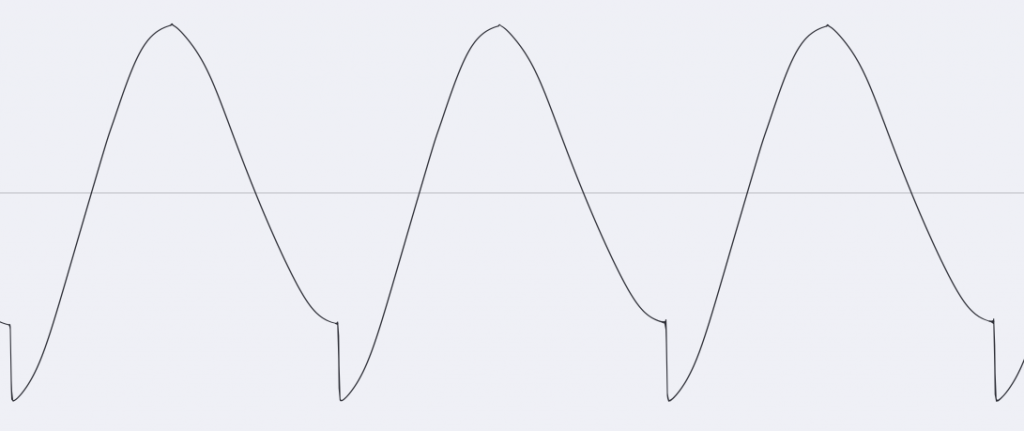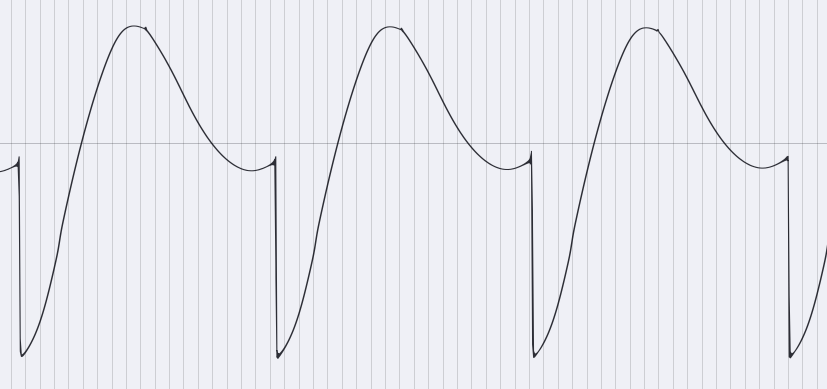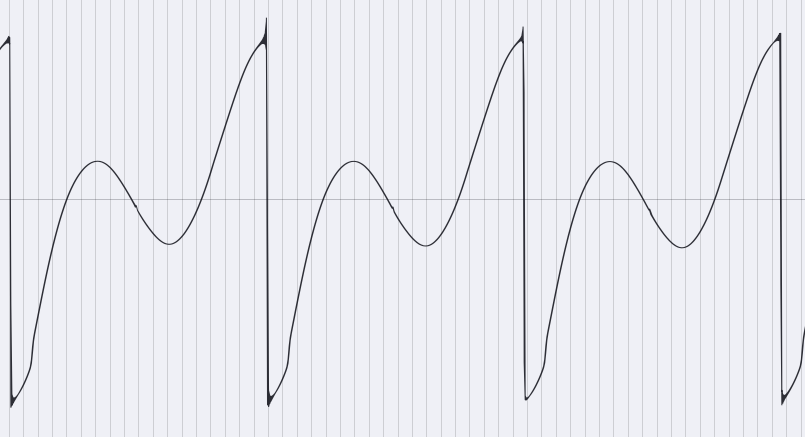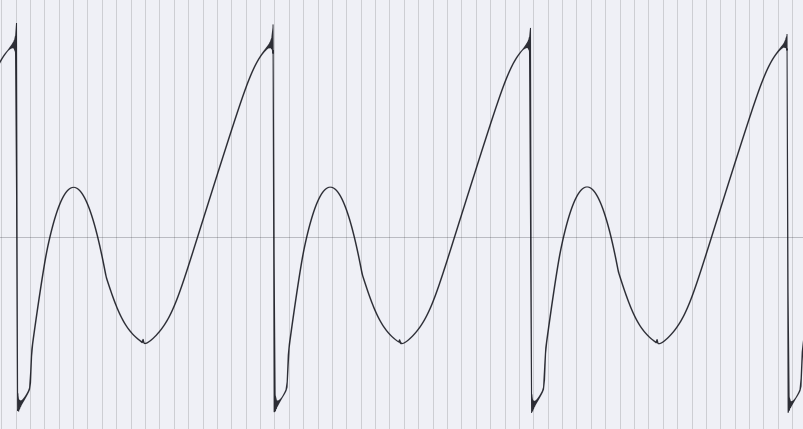Compared to the rather unpretentious predecessor A-147, the new VCDLFO (Voltage Controlled Delayed LFO) is a monster. No fewer than 12 connection sockets on a module that is only 8 HP wide are already an announcement in terms of complexity in a confined space.
In fact, Doepfer added a delay function to the voltage-controlled LFO (it’s actually a slow increase in amplitude and not a switch-on delay, as the name “delay” might suggest). If necessary, the amplitude of the LFO will slowly increase. In addition to a simple attack envelope, a small VCA is built in for this, through which the LFO signal is channeled. However, the VCA can also work as a voltage-controlled polarizer and has a freely patchable input, output and control input, so that ring modulator or waveshaper applications are possible.
User interface
Inputs:
EN-CTRL-A147-2-INOutputs:
EN-CTRL-A147-2-OUTControls:
EN-CTRL-A147-2-SWWho needs the module?
The A-147-2 is certainly Doepfer’s most complex LFO, although it needs only 8 HP. It is in the nature of things that the clarity suffers somewhat with this limitation. If you still have the previous model, you can get the same functionality if you also use a small VCA/polarizer and an envelope generator. This takes up a lot more space, but it’s also a little easier to grasp “at first glance”. The new A-147-2 is particularly suitable for modularists who want or need to work in the smallest of spaces. Finally, thanks to the completely free patchability, you can use the VCA and attack envelope curve completely independently of the LFO if necessary.
Configuration via the board
With a jumper on the circuit board, the LFO can also be operated in an extremely slow “ultra low mode”.

Basic principle of the module
Doepfer has packed quite a few things into this module that are not necessarily obvious at first glance.
First, we have a voltage-controlled LFO that extends into the moderate audio range (around 1 kHz). This is not earth-shattering, but sufficient for some sounds. Unfortunately, the control characteristic of the CV input is not 1V/octave, so that a sequencer without a quantizer (and a good tuner) should be used for “musical” use.
All four generated waveforms are available on individual outputs, the triangle wave is pre-wired to the internal VCA. The “In” socket of the VCA section is a switching socket that can break this connection. If required, you can connect one of the other waveforms here or use the VCA / polarizer completely separately for other signals. In “Polarizer” mode, the VCA inverts the input signal as soon as the control voltage becomes negative.
Also pre-wired with the VCA is a simple attack envelope, which can also be separated from the VCA via a “CV” switching socket and replaced by another modulation source. The envelope has a trigger input, labeled “Delay Reset” here. There is no standard connection in the module for this. When switched on, the envelope emits a constant voltage, so that the VCA is initially permanently open. There is a “Delay Out” output so that the envelope can also be used for other modules, such as a downstream filter. The envelope also has a control voltage input that can be used to determine the length of the attack phase. The control voltage and the manual controller together affect the speed of the envelope.
The designations “Delay” and “Reset” are chosen somewhat unusually, they are actually “Attack” and “Trigger In“.
The LFO as a sound laboratory – sound examples
Sure, you can also use the module to create a slowly occurring vibrato or tremolo. To do this, the trigger of the synthesizer voice is used in parallel with the reset input of the A-147-2 internal envelope. With every key press or every sequencer step, the slowly increasing amplitude of the LFO is also started.
But the module is really fun when you use the LFO and the envelope at audio speed: Fast amplitude and ring modulation are then just as possible as waveshaping.
In the first example the sine signal of the A-147-2 is used and patched into the internal VCA. The internal square signal is the trigger for starting the internal attack envelope. The internal VCA is used as a polarizer, an A-143-3 modulates the length of the attack envelope with a triangle wave. The frequency of the LFO is controlled by an A-155 sequencer (without quantizer). I vary the frequency of the A-143-3.
In the next example, both the triggering of the envelope and the modulation of the attack length are controlled by two LFOs of an A-143-3, the A-147-2 is again controlled by an A-155. The internal VCA is used this time as a VCA (without polarization).
Finally, instead of the A-143-3, I use an A-147 as a modulation source directly for the internal VCA of the A-147-2. The attack envelope remains unused. Initially, the internal VCA is switched as a conventional VCA, but will be switched to the polarizer as the example progresses. The A-155 sequencer controls the A-147-2 again, and the A-147 is also reset with each step of the sequencer.
Here are a few more detailed pictures of how a sine wave is changed by its own envelope (triggered by the internal rectangle) and the VCA in polarizer mode:




Technical specifications
| Width | 8 HP |
| Depth | 55 mm |
| Power requirements | 60 mA (+12V) / -40 mA (-12V) |
